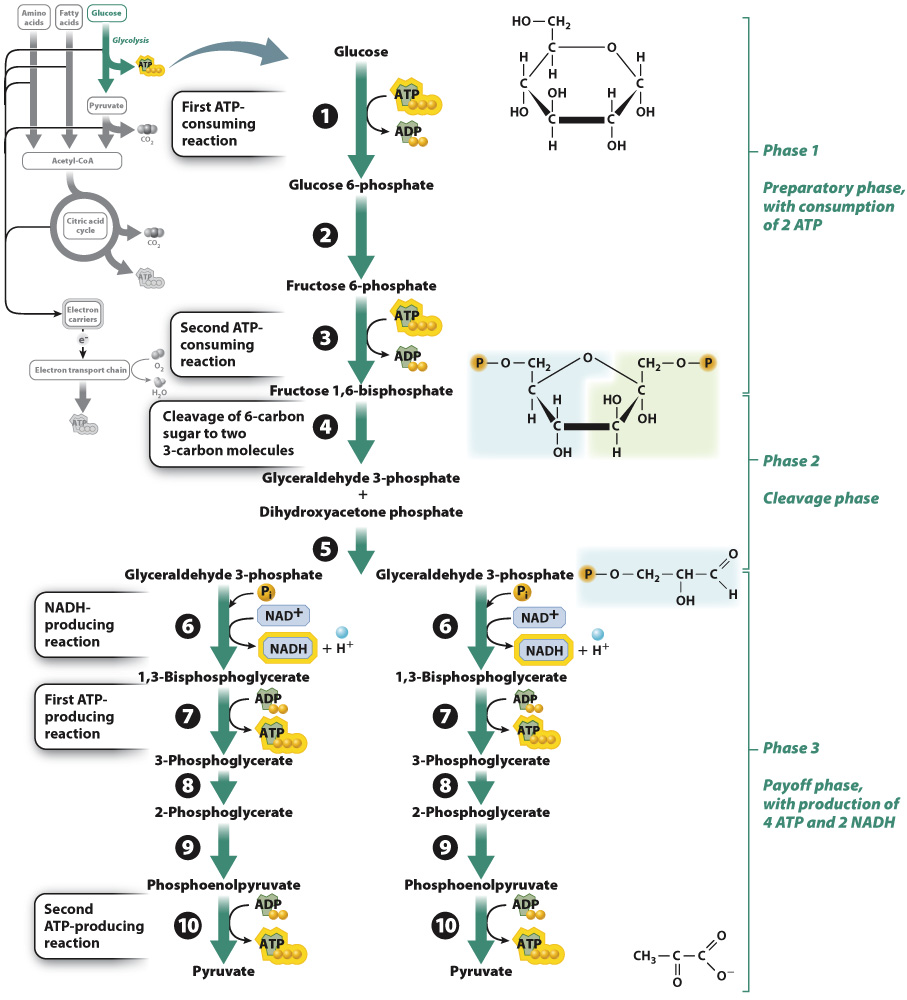Glycolysis is the partial breakdown of glucose.
137
Glycolysis begins with a molecule of glucose and produces two 3-
Glycolysis is a series of 10 chemical reactions (Fig. 7.5). These reactions can be divided into three phases. The first phase prepares glucose for the next two phases by the addition of two phosphate groups to glucose. This phase requires an input of energy. To supply that energy and provide the phosphate groups, two molecules of ATP are hydrolyzed per molecule of glucose. In other words, the first phase of glycolysis is an endergonic process. The phosphorylation of glucose has two important consequences. Whereas glucose enters and exits cells through specific membrane transporters, phosphorylated glucose is trapped inside the cell. In addition, the presence of two negatively charged phosphate groups in proximity destabilizes the molecule so that it can be broken apart in the second phase of glycolysis.

The second phase is the cleavage phase, in which the 6-
The third and final phase of glycolysis is sometimes called the payoff phase because ATP and the electron carrier NADH are produced. Later, NADH will contribute to the synthesis of ATP during oxidative phosphorylation. This phase ends with the production of two molecules of pyruvate.
In summary, glycolysis begins with a single molecule of glucose (six carbons) and produces two molecules of pyruvate (three carbons each). These reactions yield four molecules of ATP and two molecules of NADH. However, two ATP molecules are consumed during the initial phase of glycolysis, resulting in a net gain of two ATP molecules and two molecules of NADH (Fig. 7.5).
Quick Check 2 At the end of glycolysis, but before the subsequent steps in cellular respiration, which molecules contain some of the energy held in the original glucose molecule?
Quick Check 2 Answer
At the end of glycolysis, the energy in the original glucose molecule is contained in pyruvate, ATP, and NADH.